11 Best Website Builders for Nonprofits (2021 UPDATED)
Lisa Hirst Carnes | June 2021
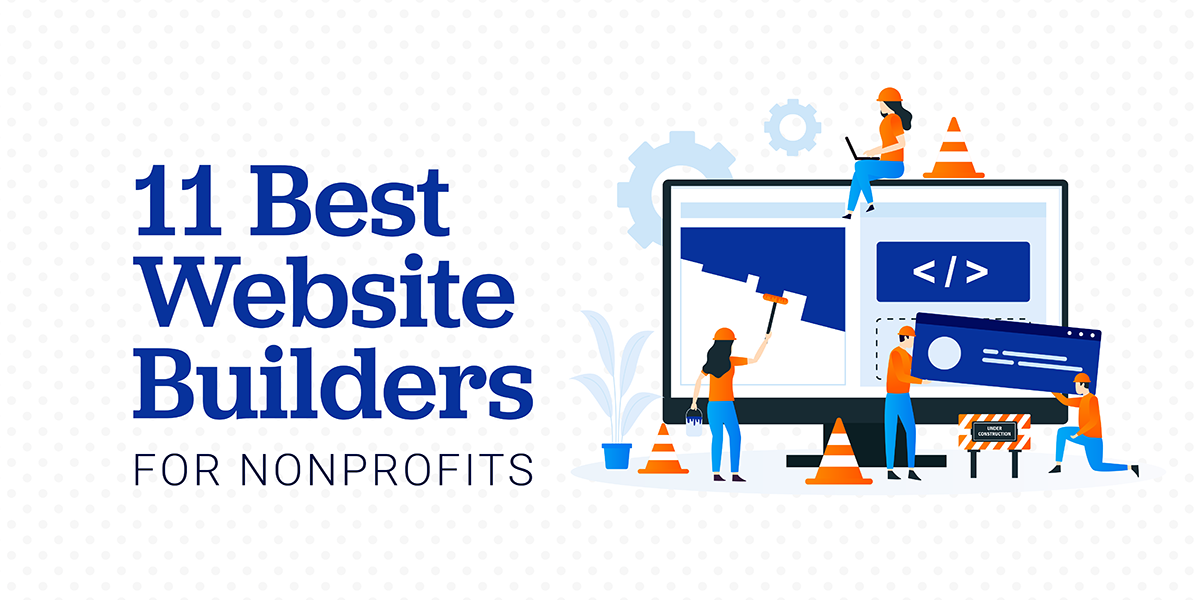
A lot goes into having a successful nonprofit brand. While supporting worthy causes is at the top of the list, creating an online presence is vital to getting the word out. For this reason, having a website that engages and converts plays a crucial role in your online visibility.
| Best Website Builders for nonprofits | WordPress |
| Best Inexpensive Website Builder | Wix |
| Best Website Builders for Beginners | Weebly |
| Top Rated Website Builder | WordPress |
| Best DIY Website Builder | Weebly |
| Best User Friendly website Builder | Weebly |
| Best Website Builder for Future Growth | WordPress |
| Best Website Builder with Built-in Support | Squarespace |
Your website is where potential supporters come looking for information about what you do. If your website does its job, then you’ll attract a following that supports your nonprofit organization.
An effective website is much more than just a pretty face. You’ll need features and functionality that encourages visitors to take action! If, for instance, your brand is focused on increasing contributions, then having donation buttons in easy-to-locate positions is a requirement.
But for your website to work, you need the best website builder for your nonprofit. You need a builder that helps you display your mission and vision messages in the most attractive ways. It may be through stunning images or interactive fonts, but the builder should enable you to market your organization without putting a strain on your budget. Your website builder should also be robust enough to handle the advanced functionality and integrations you need. For example, if your nonprofit organization uses a donor management system like Little Green Light, you’ll need a website builder that offers a seamless integration.
Why Do You need the Best Website Builder for Your Nonprofit? And what Does the “Best” mean?
Overall, choosing a website builder that’s a good fit for your nonprofit can make or break your website’s effectiveness. There are lots of reasons you need a good website builder for your nonprofit.
First, your website needs to keep your supporters informed of what you do. If, for example, you had a community outreach program in the past month, sharing the relevant photos and videos is offering accountability to the people who have supported the cause. Your website builder needs to offer an easy way for your team to regularly make updates. If there’s even the tiniest bit of friction, updates will not likely happen.
Next, you want people not familiar with your brand to interact with you. This may come through donations or volunteer services that encourage page visitors to partner with you. By having a website with event calendars, registration forms, resource libraries, training videos, or easy-to-follow CTAs, you make it convenient for anyone visiting your website to take action. Not all website builders are created equal. In other words, some simple systems may be easy to get setup initially but advanced functionality may be limited.

As we look to discuss the best website builders for nonprofits, let’s take a close look at some features that put them at the top of the list.
- Easily accessible registration forms
- Availability of event calendars and reminders
- Convenient drag-and-drop builders
- Easy-to-follow call-to-action (CTA) buttons
- Affordable pricing
- Easy integration with other applications
- Peer-to-peer interactions
- SEO capabilities
- Accessibility ability
- Availability of preview options
For both beginners and advanced nonprofits, here are the eleven best website builders you could use to boost your online visibility:
1. WordPress
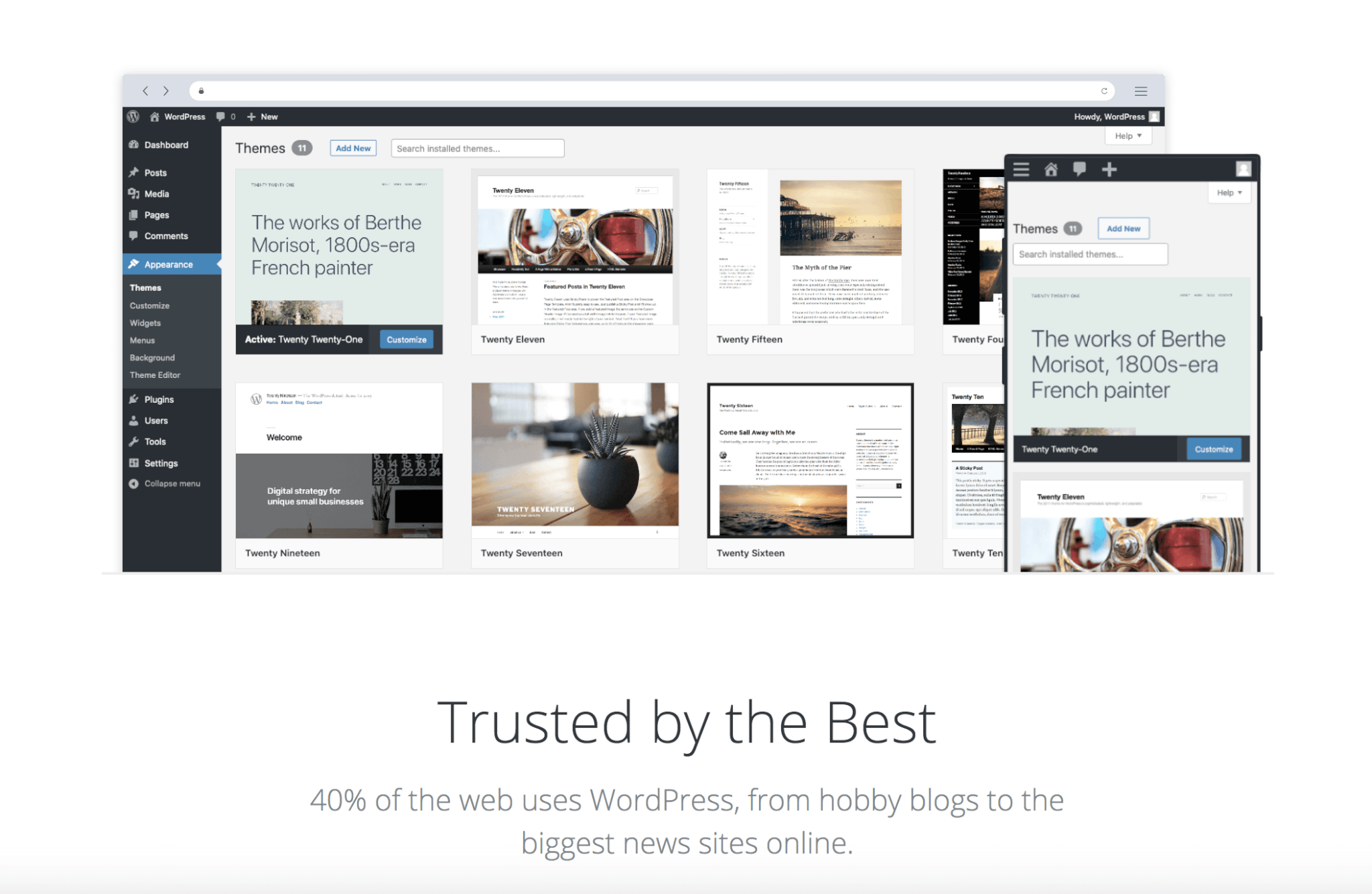
WordPress first launched back in 2003. At that time, it was primarily a platform for bloggers but over the years, however, WordPress evolved into a robust website builder that’s flexible and highly customizable.
WordPress is a content management system or CMS for short. It’s designated as open-source which means it is free to use and modify. Open source platforms like WordPress tend to create a collaborative system with a vibrant community committed to making the platform better. This is an advantage for nonprofits and for profits alike because WordPress as a website builder is constantly evolving and improving.
According to W3Techs, WordPress powers 40% of all the websites on the internet. If your nonprofit chooses WordPress, you’re in good company. Some of the internet’s most popular sites and nonprofits like Bloomberg News, The New Yorker, The Jane Goodall Institute, and Cure International are powered by WordPress.
One reason people like WordPress is because it’s extremely user friendly and it doesn’t take much time to get up to speed. If your nonprofit is interested in updating your website content frequently, (let’s face it if this isn’t one of your website goals, it should be), WordPress is a good choice for you.
WordPress sites are responsive and function well on all devices.
Also, WordPress has the most extensive plugin choices. Currently, there are over 58,000 WordPress plugins that will extend your website’s functionality and features. Some of our favorite WordPress plugins include Yoast SEO, WP Rocket, Gravity Forms, and Olark. Chances are, if you need your website to do something, there’s a plugin out there to help.
Overall, WordPress is a flexible and highly customizable CMS platform but, if you do not have any coding experience, you may find it challenging. However, if you have what it takes to build a site, or you’re working with a digital agency, take advantage of their extensive range of plugins, themes, and SEO capabilities to give your nonprofit website a stunning look and performance.
For more on WordPress, read our WordPress Pros and Cons post.
Pricing
There’s the free basic plan for those on a tight budget or just testing the waters for upgrades later on. There are also premium, business, and e-commerce options, with the lowest plan starting at $8 per month.
2. Squarespace
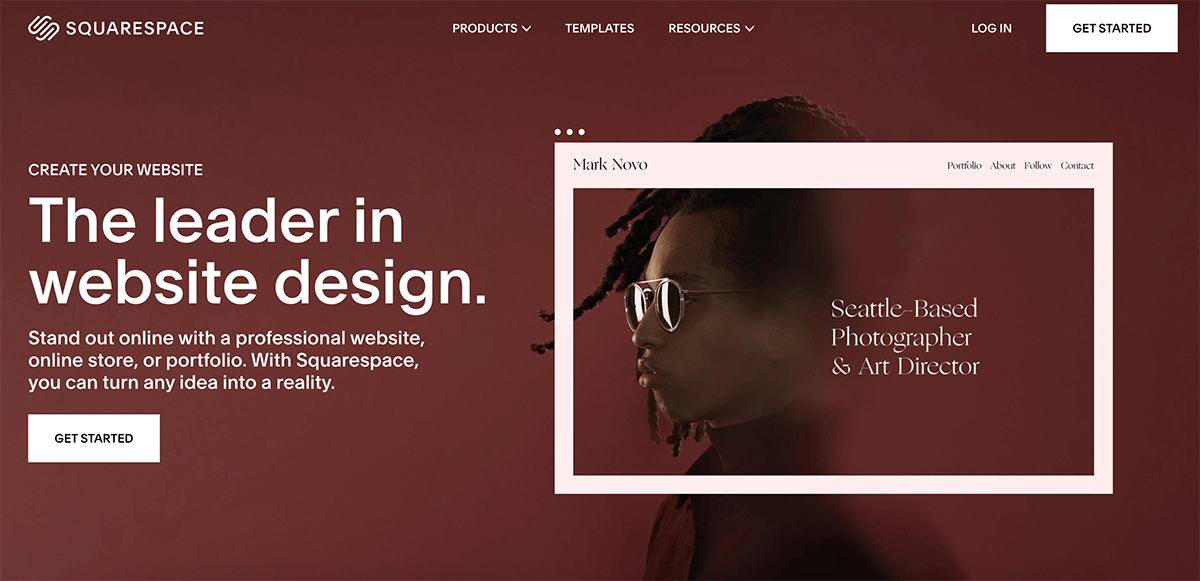
Squarespace positions itself as THE website builder choice for portfolio sites and small stores. Squarespace accounts for only 1.6% of all content management systems.
The most compelling aspect of Squarespace is its drag and drop builder. This means that even with little or no coding experience, you can quickly create an appealing website for your nonprofit.
Also, Squarespace comes with hundreds of templates to choose from. So, for any educational, church, or other nonprofit organization, Squarespace offers the capabilities to create an engaging website.
Its SEO capabilities are solid. Its mobile responsiveness is good, and users on different devices can easily access websites built through Squarespace.
But Squarespace comes with its fair share of challenges. The first is that it lacks support for non-design elements. For example, it does not autosave and you need to save your work after making changes.
The worst part about this is that you may never realize the downside until you are way deep into designing. This is because the help page does not show what you can and cannot do on their website.
Also, there’s a restriction on website design since there’s only one level of sub-navigation that’s allowed. So, a large website requiring an advanced menu hierarchy may not work on Squarespace.
Coupled with it not supporting 3rd party extensions and apps, this makes it a little complicated for people with no coding skills. The lack of a preview option to see what your page looks like before publishing also makes it less convenient for businesses.
But all in all, we agree that it’s among the best website builders for nonprofits because of its styling options. If you’re a new or small nonprofit needing limited functionality from your website, Squarespace is a good fit for you.
Pricing
Squarespace is among the few known websites without a free plan. If you want to try it at no cost, you may have to choose the 14-day trial period. Other available plans are personal, business, basic, and advanced. Their cost ranges from $12 to $40 per month.
3. Wix
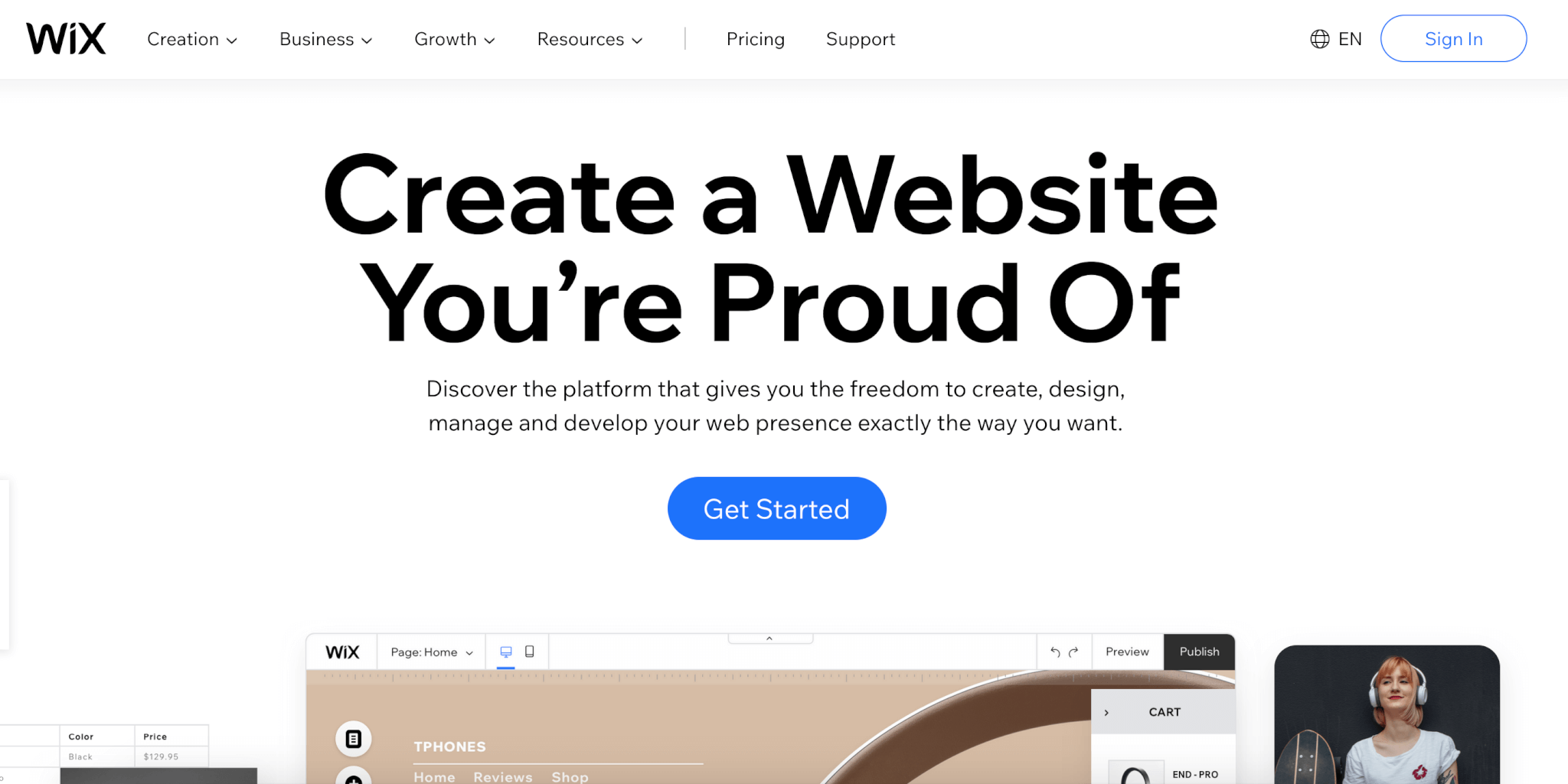
Wix has always been a go-to for small nonprofits and accounts for 1.5% of all content management systems on the Internet.
It’s easy to use a builder that delivers the responsive elements. For example, if you want to personalize every message you send to donors, volunteers, and the community, this website builder would support you doing that.
The Wix drag-and-drop option allows you to place elements where you need them. Making it super easy to use if you have no coding experience. With its preview option and mobile editor, you can see how your final draft will look after publishing, thus avoiding surprises.
Wix also comes with many pre-made templates. So, if you are just starting on your nonprofit website, you do not have to worry about coding skills to build an appealing site. You can check the left-hand side to locate every feature and widget that you need for your website.
For a first-timer that wants to build an automatic website, you can use the Wix ADI (artificial design interface) to get things moving in the shortest time. The Wix App Market is also a great place to start with the platform offering a wide range of widgets and templates. But if you want to go a little extra with your coding skills, you can embed codes into your website using the code element.
On the downside, Wix has limited storage space. For organizations with lots of data, Wix may not be ideal. Also, the payment options are limited to Wix payments, PayPal, and Square. This means you may incur additional expenses if you host on their site. If your nonprofit needs a lot of customizations or functionality, Wix may not be a good option for you.
Pricing
Wix has a free basic plan. Other paid options include the combo, pro, and business basics, with prices ranging from as low as $14 per month.
4. Weebly
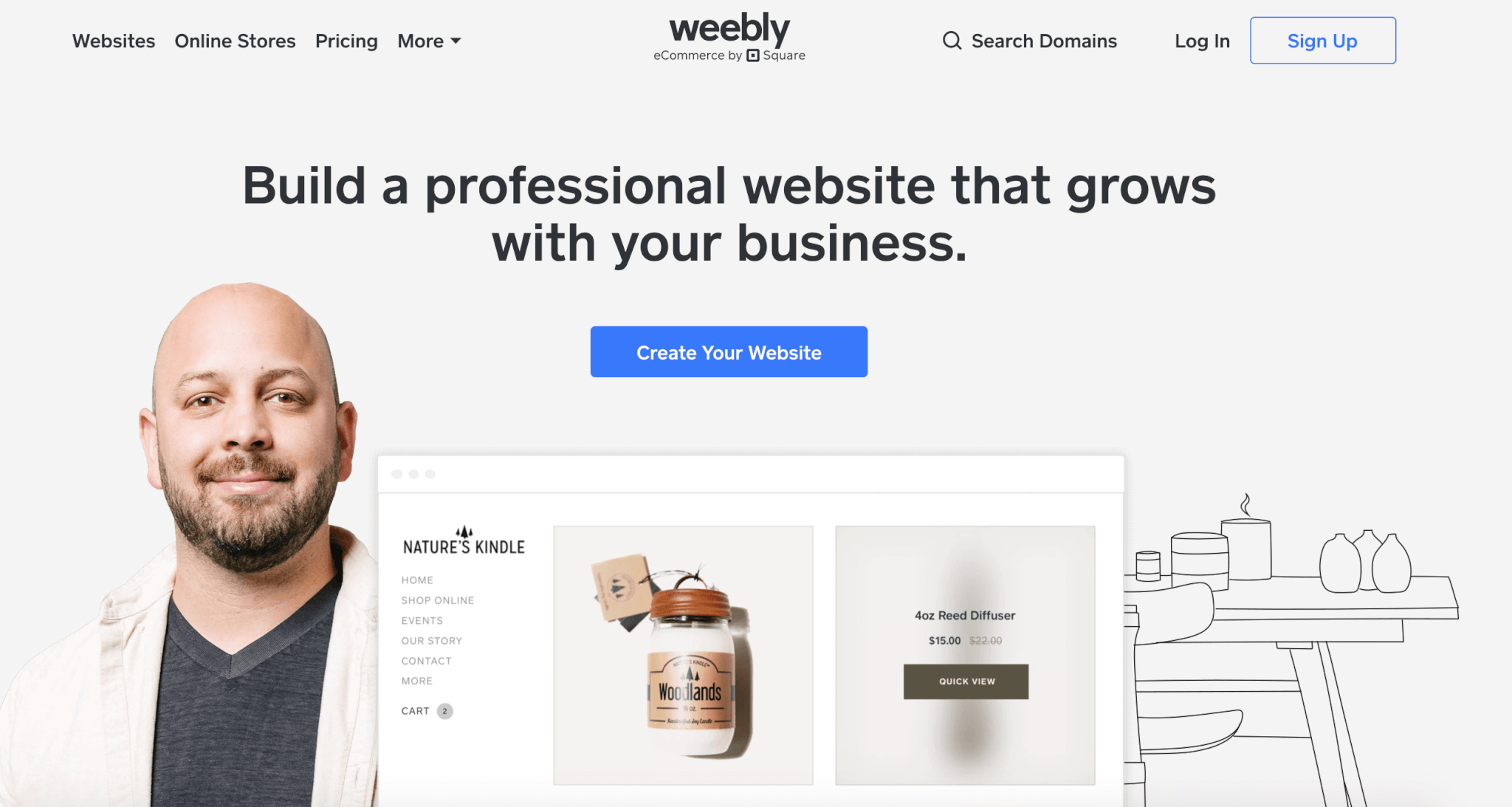
According to W3Techs, Weebly powers .3% of all content management systems on the internet.
If you need a simple website that offers interactive elements, Weebly may be the right website builder for you. It’s a straightforward website builder with widgets and menus that are easy to locate on the page. Its drag-and-drop interface is also easy to use, making it ideal for anyone with little or no web design experience.
Also available are a variety of templates that give your website that professional look. Even better is how the preview option allows you to see precisely how your website will look after publishing. If you are a beginner, this will enable you to tweak elements to a level that gives your website the best looks.
Next comes the Weeblys’ App Center that delivers more features for your nonprofit. With the app, you can have a members-only area or even recurring donations for your organization. The downside to this is that you’ll have to pay extra for the service. Even sending unlimited emails is only specific to individual plans. So, if you are a little short on cash, Weebly may limit your interactions.
Weebly may be a challenge for international organizations that require a website in multiple languages.
But overall, its social media integration, appealing visuals, and availability of event participation forms make it a good option for nonprofits that require limited functionality and need to get up and running quickly.
Pricing
Weebly offers a free plan. The paid plans include personal, professional, and performance. The price ranges from $6 to $29 per month.
5. Drupal

The first version of Drupal was released in 2001. It was originally developed as a message board for students at the University of Antwerp.
Like WordPress, Drupal is open source. Unlike WordPress however, Drupal only accounts for 1.5% of the CMS market share.
Drupal websites are constructed using Drupal modules. With modules you can add features and functionality to your website.
One area that Drupal shines relates to access controls and user permissions. Drupal offers a built-in access control system where you can create and assign new roles with unique permissions. If your nonprofit has very specific access requirements, Drupal may be a good option for you.
Drupal also offers good global experiences in many languages and multilingual functionality. This may come in handy for nonprofit organizations with a large international audience.
While Drupal may be good for large, complicated websites, learning is difficult and takes time. For that reason, Drupal may not be a good choice for nonprofit organizations who do not have team members with HTML, CSS, and PHP experience.
Pricing
Drupal offers a free plan.
6. Sitebuilder
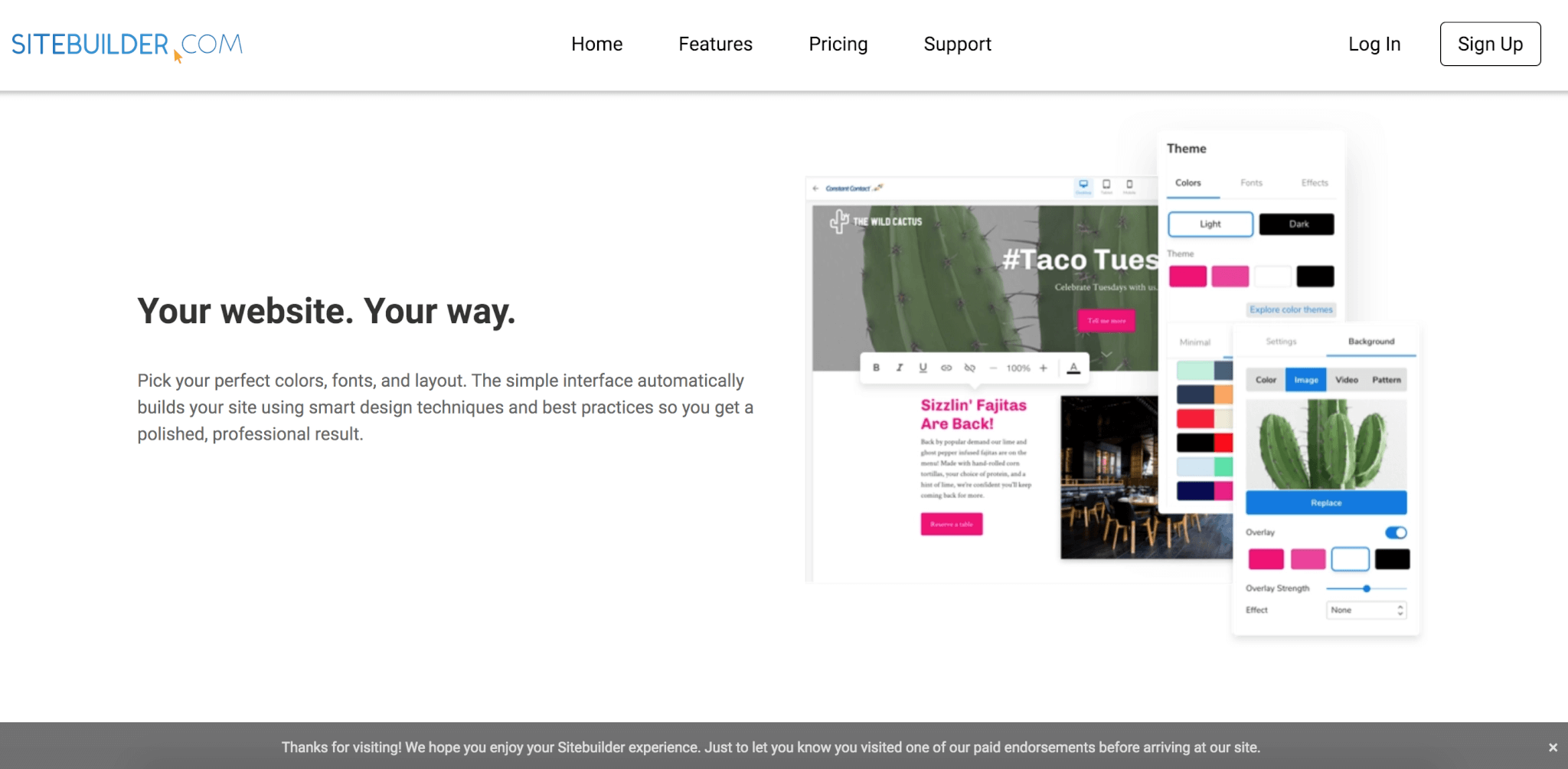
Sitebuilder is a simple website builder. It delivers simplicity and touts ease-of-use. It’s a low-cost website builder that’s most suited for organizations with limited activities. So, if your nonprofit is heavy on images, content, and functionality, this may not be the ideal website builder for you.
Sitebuilder is a drag-and-drop builder that allows you to edit your templates easily. It also comes with a vast number of pre-filled templates for you to edit. Even better is its preview option that allows you to see how your website looks when it goes live.
It’s also easy to work with images on Sitebuilder. You only need to upload photos from your computer and easily update them on a page. Their library also has a viable option of stock images you can use.
But when it comes to features, Sitebuilder falls short on most of them. They may have a range of templates, but the content is outdated and does not suit current trends. Sitebuilder also only allows video embeds from YouTube and Vimeo, and this limits what you can upload on your website. With a storage space of 50MB and 10GB, there’s a limit to how long the website can serve you.
Sitebuilder is a decent website builder for small or new nonprofits or those with limited finances to operate with. It may not offer all the beauty and technicality that comes with other builders, but it sure does give you an online presence. It’s convenient for those who want quick and easy websites.
Pricing
The prices at Sitebuilder are impressive. We have the pro, premium, and e-commerce plans with a price range of $4 and $10.
7. Godaddy

Godaddy is mostly known for web hosting and domain names, but you can also build a website with them. This creates convenience since you do not have to move from one site to another for hosting and web building.
Godaddy is also a beginner-friendly builder that offers some SEO capabilities and mobile responsiveness. If your nonprofit is focusing on ranking higher in search engines, using most of its features may boost your SEO and SEM efforts. Even more interesting is how you can use its email marketing tool or create social media posts from the site to upscale your digital marketing strategies.
Godaddy also has over 300 templates available on the platform. Its library is also packed with lots of images fit for small or new nonprofits who don’t have a library of original assets.
The downside with Godaddy is, however, that it’s more adaptive to small businesses and entrepreneurs. This is because the features are not detailed enough to support large organizations receiving bulk data. For example, its email service does not offer unlimited messages to members. For a prominent nonprofit dealing with many emails every day, Godaddy can limit your growth potential.
Another downside to Godaddy is their lack of support. If you are having issues or challenges with your website, it may be tough to get help.
Pricing
Godaddy offers a free one month trial for those who want to test if they are the right website builder for their nonprofit. They also have a basic, premium, standard, and eCommerce plan with a price range of between $10 and $25 per month.
8. Site123
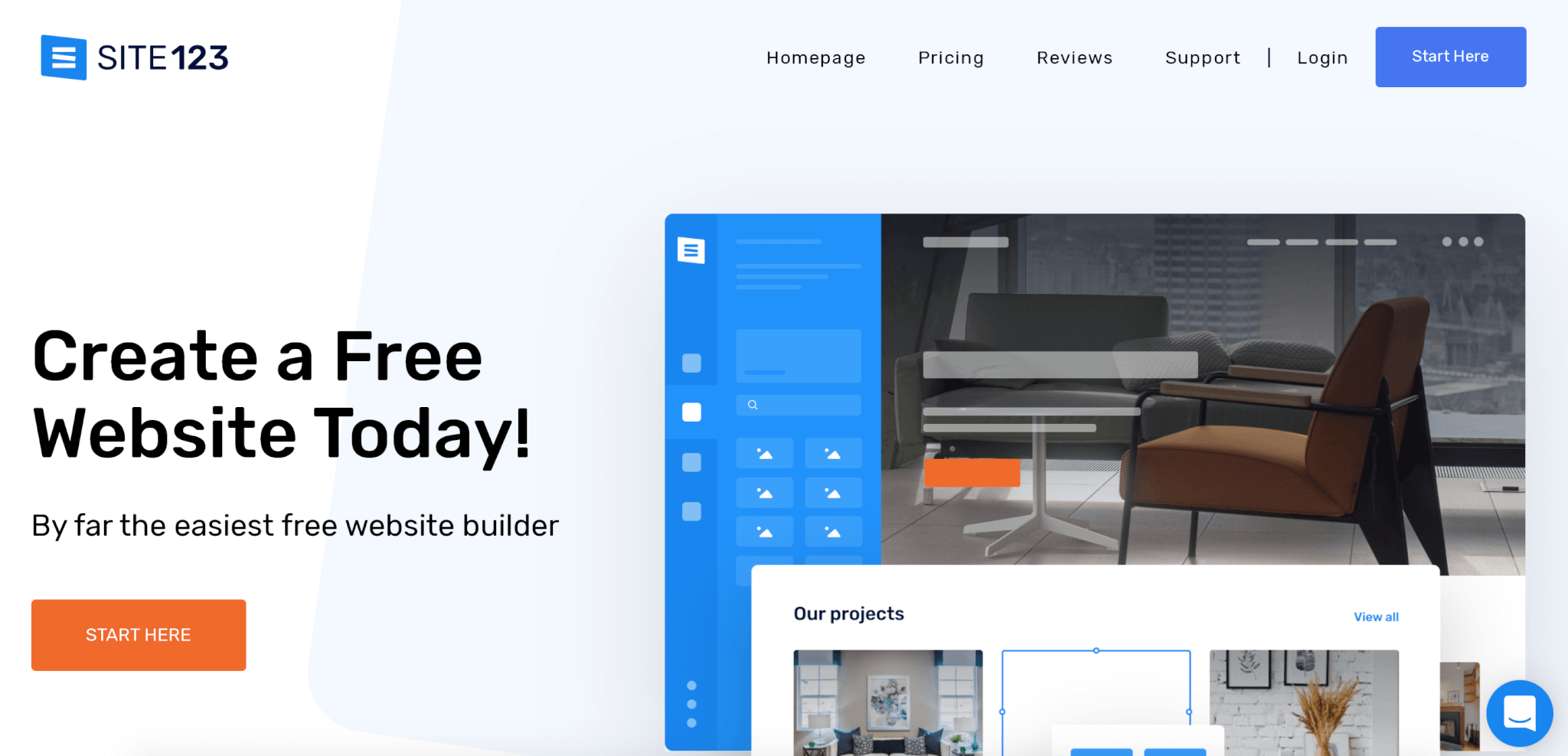
Site123 takes the lead as one of the fastest website builders. It also holds a reputation for having the best customer support, primarily through its Live Chat. If you are ever stuck with anything on Site123, then you always know that their customer support team is only a call away.
Another thing that contributes to its awesomeness is that users are asked questions before interacting with the builder. For example, they may ask what kind of website you want to build and your site’s name. This way, they know the variety of templates to show.
Even more convenient is its drag-and-drop interface that allows a nonprofit with minimal requirements to build a website fast. If your nonprofit is focused on blog creation, you will love the RSS feed, analytics, search, and social bookmarking features.
But if you are looking to incorporate a comments section, Site123 may not be the best choice for you. It also misses features that display categories and archives in your blog section. For this, you may have to choose a website builder like WordPress or Weebly that’s excellent for content creation. But overall, Site123 is convenient for a small nonprofit with minimal content to share.
Pricing
Site123 offers a free plan. But the downside to the free option is the 500MB storage that’s too limiting on what you can do on the site. Alternatively, you can pick the basic, advanced, professional, or gold options.
The unique thing about Site123 is that it bills its packages in periods of 3-months, one year, two years, and three years. The cheapest plan is the basic plan that costs $8.45 per month billed 3-yearly. On the higher side we have the gold plan that costs $47 per month billed in a 3-months period. This means that the shorter your sign up period, the higher the plan will cost.
9. Joomla

Launched in 2005, Joomla is nearly as old as WordPress and Drupal and also open source.
According to W3Techs, Joomla powers 2.2% of all content management systems on the internet. Over the last few years, Joomla’s market share has dropped significantly.
Similar to Drupal, Joomla offers more advanced user management and access controls without extra programming.
Joomla also offers the option of using multiple templates for different pieces of content.
It also has multilingual support built-in the core product.
Overall, Joomla’s market share continues to decline. This may be a red flag for nonprofits looking for a long term solution.
Pricing
Like Drupal and WordPress, Joomla is free to use and update.
10. PageCloud
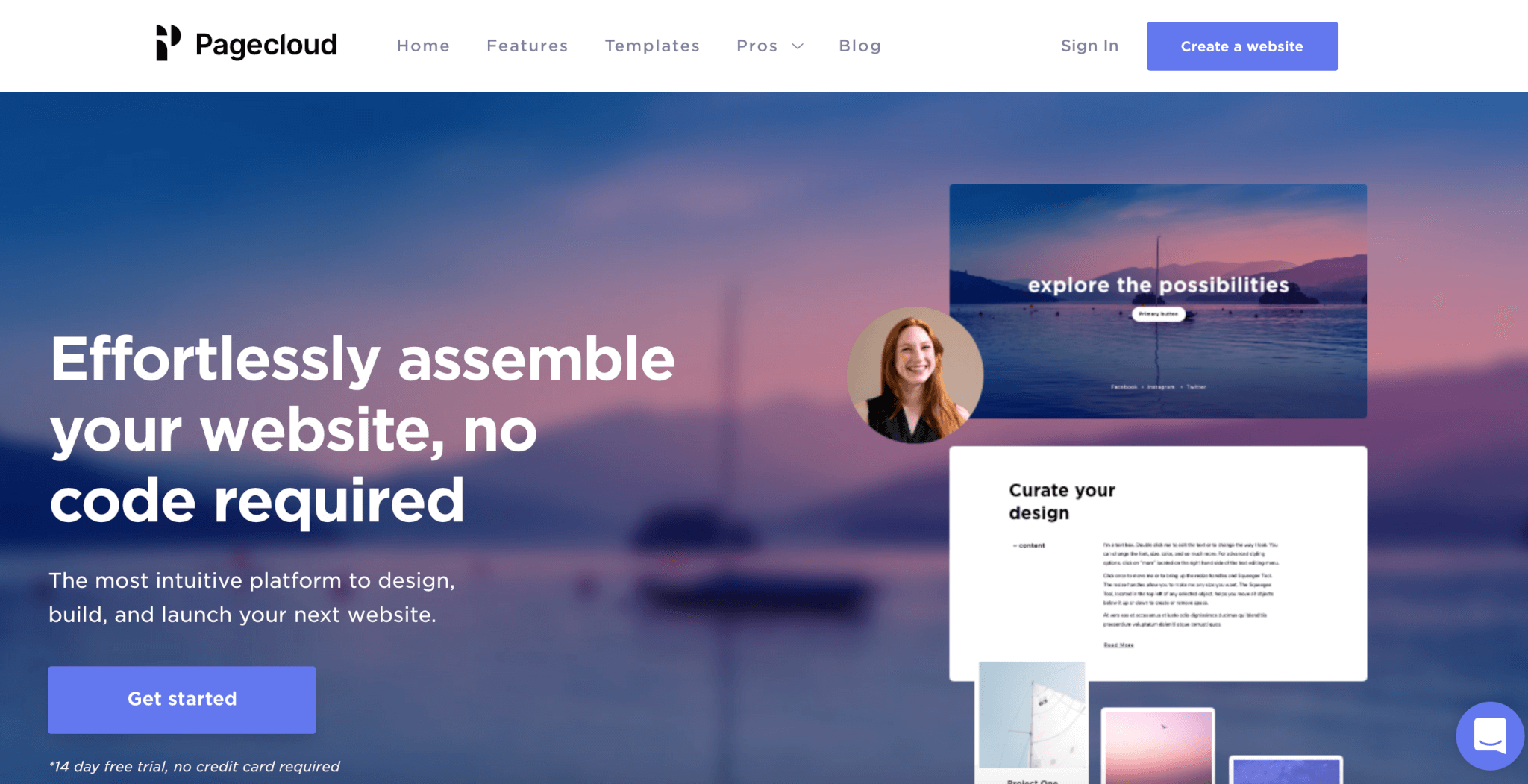
One thing that’s going to catch your attention is how easy it is to customize on PageCloud. You can position and style your text, images, or forms whichever way you feel like. For nonprofits, this gives you more freedom to personalize your website in ways that would convert more people.
When it comes to creating a website, PageCloud is pretty easy to use. You simply enter your email, answer what you need the website for, and get a big selection of templates for your website. Even better is how different people can collaborate simultaneously, from different locations, to create the website.
PageCloud may be a little low on the number of templates at +40, but the graphics are all of high quality. So, if you are looking for stylish and modern themes, then you’ll find them in this builder.
On the downside, PageCloud still lacks in mobile responsiveness. If you must edit a template for mobile, you must move to your desktop to do it. Also, the mobile version does not change automatically, and you may have to adjust things manually for your mobile viewers’ sake.
For this reason, we don’t recommend PageCloud.
Pricing
Pricing is pretty simple in PageCloud. It’s just a single price for everything that comes with the builder. So, the integration, templates, storage, and security features are all priced at $20 per month if paid annually. If you are to pay monthly, then they’d price it at $24.
11. Jimdo
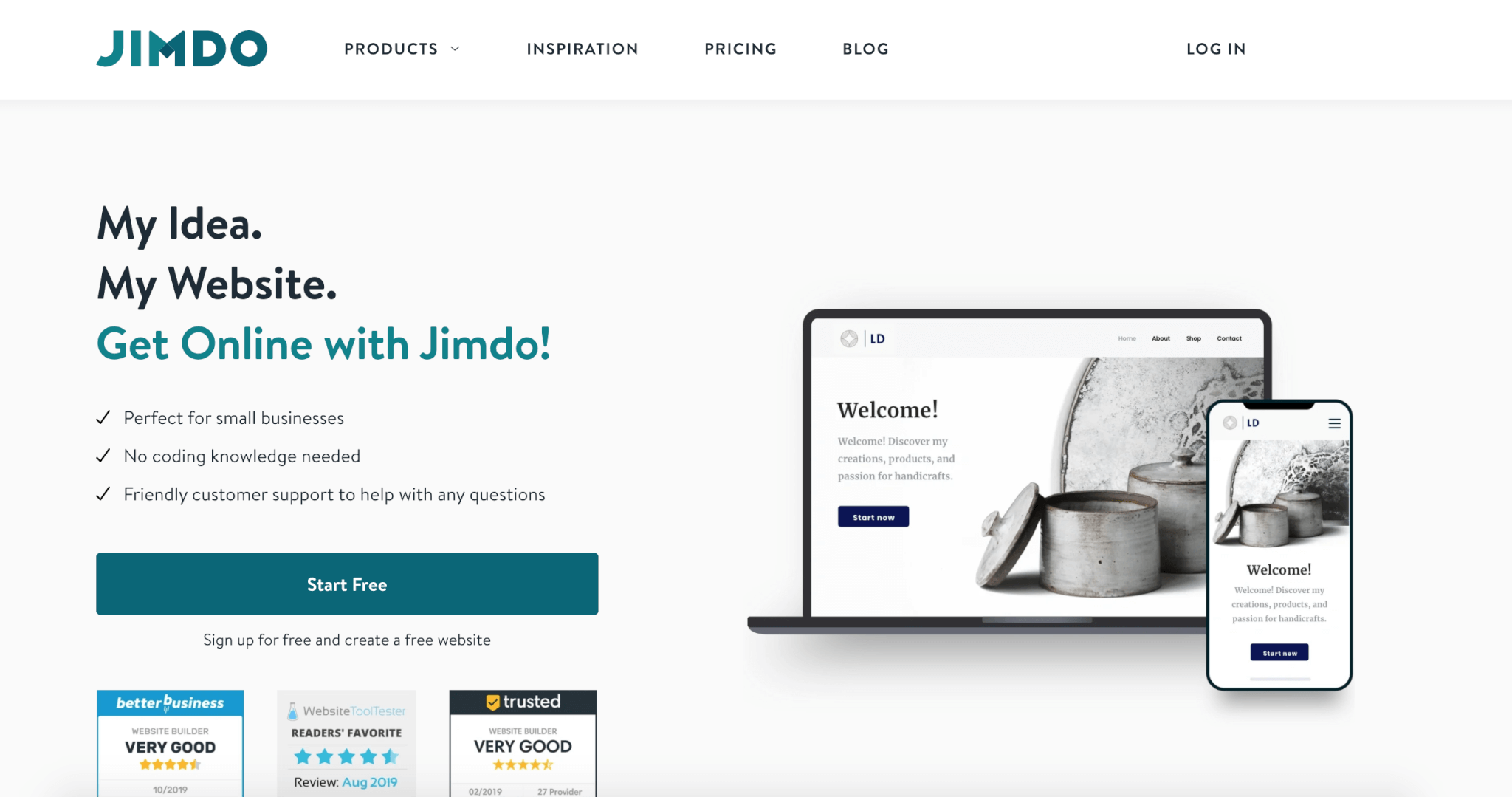
Jimdo comes with ready-made templates that allow you to create a clean and organized website. It is considered one of the top website builders for DIY nonprofits because it is easy to use and is ads-free.
With Jimdo, you do not need coding experience. Most of its processes include drag-and-drop elements that are easy to understand. Jimdo also allows you to quickly resize your images or add a contact form by simply clicking on the plus icon on the page.
Though not ideal for large organizations, Jimdo fits perfectly for small nonprofits. Jimdo also offers a free custom domain for the first year in premium plans. So, if you are looking to save some money, this will be the perfect website builder for you.
Unfortunately, if you are to renew the custom domain, you’ll have to pay $80. This is by far the highest amount from our list of the best website builders. But considering how easy and customizable Jimdo is, we still place it among the best website builders for smaller nonprofit organizations.
Pricing
There’s a free plan for anyone just starting. You can also choose from the pro, business, SEO plus, and Platinum for the paid plan. The price ranges from $7.5/mo to $40/mo billed annually.
DIY vs. Expert Web Design Firm
While Do-It-Yourself may seem like the most comfortable and cheapest way to get a website up and running, it does not work for all nonprofits. Most established nonprofit organizations need a polished design, robust functionality, and tight integrations. In other words, they need an expert with a proven track record.
So, to get the best from your website builder, consider hiring a web design firm that focuses on nonprofits.
Some aspects you will benefit from when you involve a web design firm include:
Better SEO Practices
To appear on top of search pages, you need a website that’s optimized for search engines. The content, URL, and tags need to set right for crawlers to rank your page. If you are not familiar with the current SEO updates, you might find yourself missing out on the top spots. So, for better optimization, consider hiring a firm with expertise in building ranking websites.
Better Accessibility Standards
If your nonprofit chooses to go the DIY route, you’ll not only be responsible for designing and developing your website, you’ll also want to make sure that it follows current accessibility guidelines. Your nonprofit doesn’t discriminate, your website shouldn’t either.
Best UX Practices
Speed, mobile-responsiveness, and web design form the basis of your websites’ performance. Through the flexibility, usability, and functionality of your designs, a person visiting your site can convert in the shortest time.
And since your websites’ builder determines how each element works, it’s important to choose the builders wisely. For a start, check how far the builders’ capabilities can stretch. For example, a site like PageCloud that still lacks mobile responsiveness may affect your conversion rates. For this, it may be necessary to learn ways of resizing or reformatting your elements to suit your goals.
This is quite a demanding task and without the right skills, you may find your website doing the opposite of what you aim for. It’s for this reason that having an expert work on your website is recommended. An expert will help pick the best website builder for your nonprofit. They’ll also know what to do if certain elements need to be tweaked to deliver good results.
How to Get a Customized Website For Your Organization
At ArcStone, we specialize in creating beautiful and high-performing websites for nonprofits so you can concentrate on other activities that grow your organization. We’ll work with you to establish the best plan that will meet your nonprofit’s needs.
Contact us to chat about your nonprofit’s website project.



